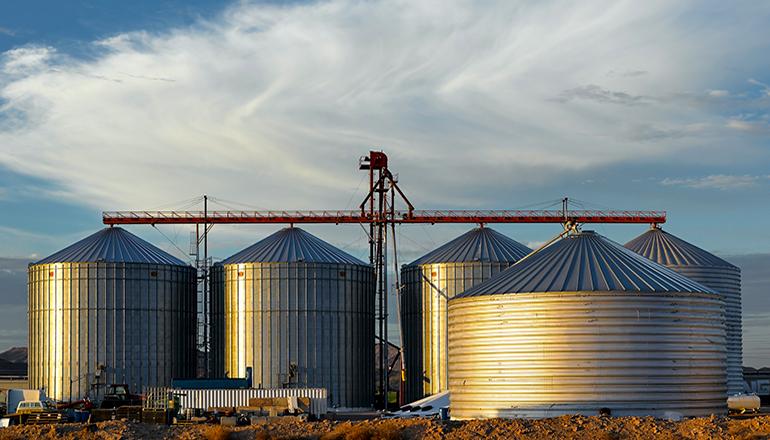The U.S. Department of Agriculture’s Farm Service Agency (FSA) is beginning to issue cost-share assistance payments through the Emergency Grain Storage Facility Assistance Program (EGSFP) for approved and funded applications that have met the requirements for partial or final payment.
FSA first announced $20 million for this program in March to help producers affected by eligible disaster events from Dec. 1, 2021, through Aug. 1, 2022, that damaged or destroyed large commercial grain elevators in eight Midwest states. Due to the high volume of program applications received, FSA has amended the original Notice of Funds Availability (NOFA) to increase the initial funding amount for EGSFP to $80 million in cost-share assistance.
The unprecedented outbreak of tornadoes and derechos impacted numerous counties in Kentucky, Illinois, Iowa, Minnesota, Missouri, North Dakota, South Dakota, and Tennessee. Significant damage or destruction to local, commercial elevators left many grain producers with limited storage capacity for harvested commodities and with no or limited marketing options. This support is being made available under the Commodity Credit Corporation, which allows USDA to act quickly to help agricultural producers navigate significant and unpredictable challenges.
“The applications that FSA has received for this assistance under our original funding announcement far exceed the limited funding available for the program,” said FSA Administrator Zach Ducheneaux. “Given the critical need for assistance across the countryside, the now $80 million allocation will be used to fund additional eligible applications that have already been received.”
Even with the $80 million in support for EGSFP– quadruple the original funding allocation – this program will not be able to meet the needs of many producers who are still experiencing storage deficits due to these disaster events. For this reason, FSA has secured an additional $40 million in reallocated CCC funds to provide much-needed help to producers and is exploring options outside of EGSFP to do so. Details will be announced in the coming weeks.
To be eligible for EGSFP, producers must have both:
- Eligible grain production.
- Demonstrated a need for additional on-farm grain storage in an affected county impacted by an eligible disaster.
Approved EGSFP applicants who meet the requirements for payment will receive cost-share assistance for the construction of new or renovated grain storage capacity and equipment required to meet drying and handling needs to support the orderly marketing of commodities in counties affected by these disaster events. FSA will not be able to approve and fund all eligible applications that have already been received by FSA even with the increase in initial funding. Therefore, the original application deadline has been modified to Aug. 7, 2023. For additional information on eligibility and payments, please refer to the initial NOFA for EGSFP that was published in the Federal Register on March 16, 2023.
EGSFP Payment Calculation
For applications that have been approved and funded, FSA is using the producer’s self-certified cost of additional on-farm grain storage capacity or drying and handling equipment multiplied by the producer’s share of grain to determine the program payment amount.
This amount is multiplied by the cost-share rate of 75% or 90%. An eligible producer who certifies that they are a socially disadvantaged, limited resource, beginning and veteran farmer or rancher by filing form CCC-860 Socially Disadvantaged, Limited Resource, Beginning and Veteran Farmer or Rancher Certification with FSA will receive the higher 90% cost share rate.
Assistance for Producers Not Funded Through EGSFP
Producers in the geographic impact area who applied for EGSFP and do not receive funding through EGSFP will be contacted by FSA.
In the meantime, for producers who may be interested, FSA’s Farm Storage Facility Loan Program (FSFL) can provide low-interest financing for eligible producers who may not qualify for EGSFP but need on-farm storage capacity. FSA is also currently reviewing FSFL policies to determine whether certain flexibilities can be made, or waivers granted, to further reduce FSFL financial obligations for producers in need of immediate grain storage.
(Photo by Jim Witkowski on Unsplash)


